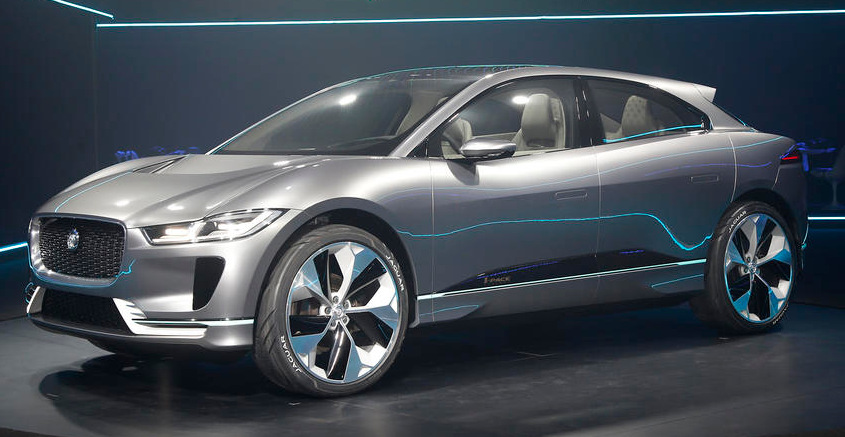Energy Efficiency and Policy
Renewable energy is undoubtedly becoming part of our everyday lives. In 2021, almost 13 percent of the total energy production in the United States came from renewable energy sources, and 17 percent of all electricity used in the nation was produced by renewables (1).
Changes in the use and production of renewable energy are clearly noticeable, since production has doubled since the 1950s, whereas the use of coal and natural gas has remained relatively stable (2). The shift towards more efficient energy consumption and production has been supported by technological advances and a better understanding of the benefits of investing in a green economy and more energy efficient choices and lifestyles. As some polls confirm, energy efficiency has become the number one concern for US homeowners, as it has a direct impact not only on home finances but also on the enjoyment of property (3).
Energy Saving Inside the Home
According to the US Energy Information Administration, approximately 6 percent of all energy consumed in the United States is for residential purposes. As time goes by, more information is becoming available to consumers helping them identify best ways of developing smart energy consumption habits (4, 5).

For example, the average US household incurs annual energy bills of $2,000, most of which is spent on heating and cooling. To reduce those costs, smart meters are being installed in a growing number of properties (6, 7). Energy efficient appliances are another common way of reducing energy bills. Kitchen appliances account for 13 percent of total household consumption, and consumer choices in this area are becoming wider by the day, ranging from LED dimming systems to motorized window treatments and daylight sensors or energy use monitoring systems that offer valuable information to help property owners make adjustments to their energy consumption habits (8).
Similarly, small actions like switching to Energy Star light bulbs can make an impact, as they consume up to 90 percent less energy than traditional incandescent light bulbs. Also, new research has shed light on the potential savings offered by energy-efficient appliances like TVs, computers, refrigerator units, and water heating systems. The same can be said of entertainment / home theater systems that are Energy Star compliant and therefore up to 30 percent more efficient than their traditional counterparts. (9, 10).

Moreover, a growing number of US homeowners are now powering their homes with renewable energy sources. 2021 brought a record-breaking number of residential solar installations, and milestones were also reached in wind power generation, especially in Midwestern states like Iowa, South Dakota, Kansas, Minnesota, and Idaho (11, 12). Geothermal power is gradually becoming more commonplace with the installation of home heat pump systems, especially in the western United States (13).
New technologies are also improving the efficiency of home heating and cooling systems, and there is now a better understanding among consumers about the impact of heating, cooling, and ventilation systems, and about how switching to smart / green solutions can reduce costs and contribute to a better quality of life (14). In fact, energy saving awareness is so prevalent that has given rise to energy efficient home design, which takes a systemic approach to ensure a better energy use of appliances, insulation, lighting, heating, cooling, and home electronics (15).
While there are some barriers to adoption (like risk aversion due to initial costs), energy saving efforts are being facilitated by state and federal programs that offer help with home improvement for energy efficiency purposes, tax credits and rebates on property taxes and energy bill discounts (16).
Energy Saving in Transportation Systems
Energy savings goes beyond the choices made by US consumers or homeowners. Efforts towards energy efficiency also take place at large scale, and a culture of sustainability and energy efficiency is making inroads into our everyday lives in areas like transportation.
As the third largest country in the world, the distances covered in the US are large, so the need for alternative fuels is evident. Adding to that is the fact that transportation accounts for almost a third of all energy consumption (17, 18). Although diesel and gasoline are still the main energy sources used in public transportation, an increasing number of US cities are funding hybrid transportation schemes, whereas others are expanding existing light rail systems and other environmentally friendly transportation methods (19).
At consumer level, the sales of electric vehicles are growing across the US and the total market share increases year after year, confirming that energy saving awareness is a key factor in decision making at consumer level (20, 21).
In summary, it seems clear that US consumers now have more information about the benefits of energy saving, a wider choice of products, and growing support from utilities and government schemes so they can make informed choices about their energy consumption habits.
Sources & Citations
This Energyboom article contains information and quotations from a variety of sources, including the following:- (1) https://www.eia.gov/tools/faqs/faq.php?id=92&t=4
- (2) https://www.eia.gov/totalenergy/data/monthly/pdf/mer.pdf
- (3) https://www.triplepundit.com/2015/01/poll-energy-efficiency-americans-no-1-housing-concern/
- (4) https://www.eia.gov/energyexplained/?page=us_energy_home
- (5) https://smarterhouse.org/
- (6) https://ewinggreenteam.org/more-information/energy-efficiency/
- (7) https://www.eia.gov/tools/faqs/faq.php?id=108&t=
- (8) http://coolinfographics.com/blog/tag/energy
- (9) https://www.neefusa.org/weather-and-climate/weather/spring-forward-energy-efficiency
- (10) https://www.epa.gov/rhc/rhc-single-family-homes
- (11) https://www.cnbc.com/2021/02/14/us-solar-installations-nearly-doubled-in-2016-and-broke-some-records.html
- (12) https://www.awea.org/MediaCenter/pressrelease.aspx?ItemNumber=6184
- (13) https://www.eia.gov/energyexplained/index.php?page=geothermal_use
- (14) https://www.eia.gov/tools/faqs/faq.php?id=1174&t=1
- (15) https://www.energy.gov/energysaver/energy-efficient-home-design
- (16) https://www.energy.gov/savings/search
- (17) https://project.wnyc.org/commute-times-us/embed.html
- (18) https://www.eia.gov/energyexplained/?page=us_energy_home
- (19) https://www.afdc.energy.gov/data/10302
- (20) https://www.apta.com/mediacenter/pressreleases/2015/Pages/150416_Earth-Day.aspx
- (21) https://insideevs.com/2021-may-us-plug-in-electric-car-sales-charted-market-up-48/








